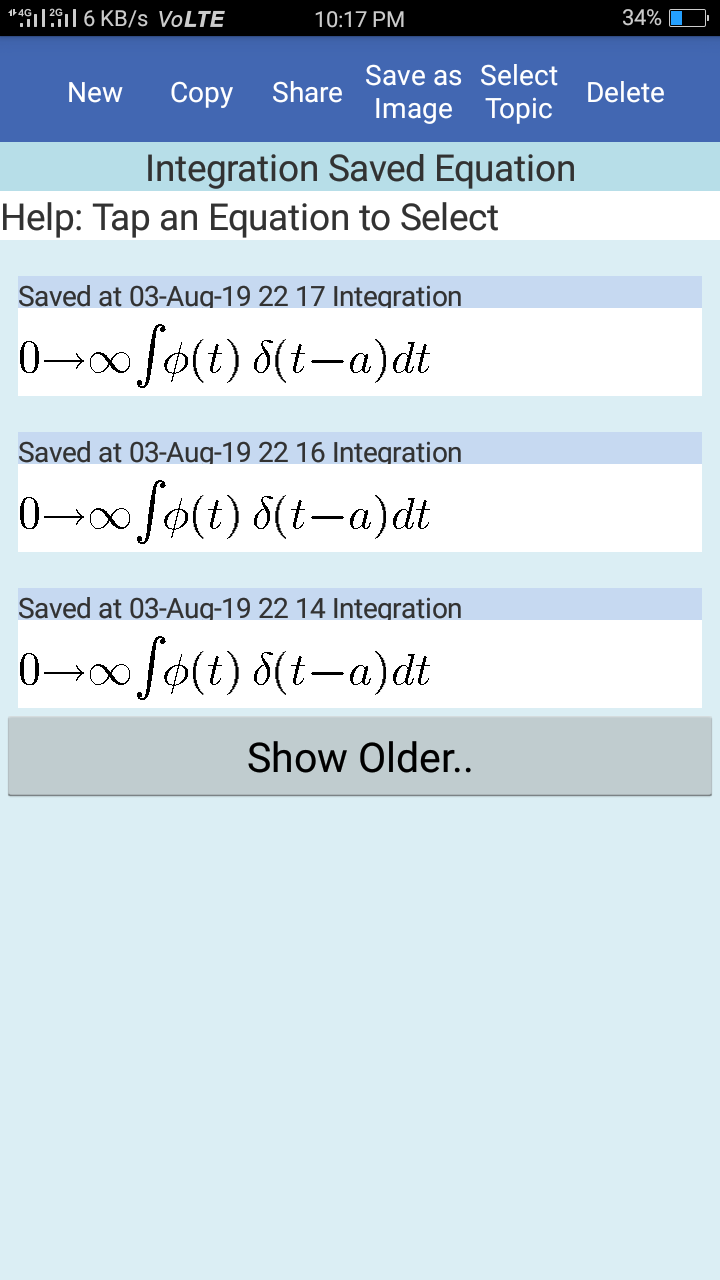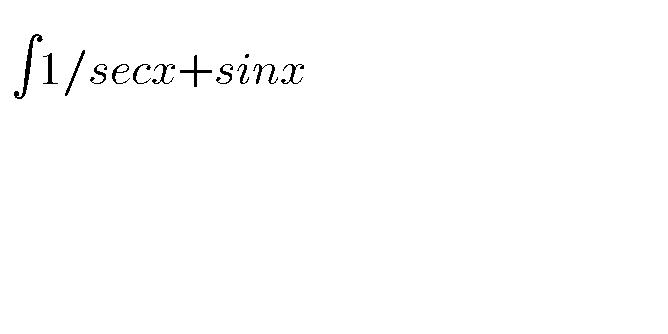
Question and Answers Forum
IntegrationQuestion and Answers: Page 220




Pg 215 Pg 216 Pg 217 Pg 218 Pg 219 Pg 220 Pg 221 Pg 222 Pg 223 Pg 224
|
Question and Answers Forum |
IntegrationQuestion and Answers: Page 220 |
| Let go toward a rational order of derivation Part 1 : What′s that special factor Let n , p and k three integer different of zero We state J_(n,k) (p)=∫_0 ^1 (1−x^n )^(p+(k/n)) dx and C_n (p)=Π_(k=0) ^(n−1) J_(n,k) (p) 1) a) Calculate C_1 (p) b) Prove that J_(n,k) (p)=(1/n)B((1/n),p+1+(k/n) ) and explicit C_n (p)in terms of n and p 2) Deduce that ∀ n>0 there exist a real a_n such as (na_n )^n C_n (p)= (1/(p+1)) 3) Study the convergence of the result suite (a_n )_n .Then show that lim_(n−>∞) na_n =1 Part 2: the rational order of derivation Let f ∈ C^1 (R,R) . We consider I_(1/n) (f) a function defined on R_+ by I_(1/n) (f)(x)= a_n ∫_0 ^x ((f(t))/((x−t)^(1−(1/n)) ))dt and D_(1/n) (f) = (I_(1/n) (f))^((1)) 1) a _ Prove that I_((1/n) ) (f)(x)= na_n x^(1/n) ∫_0 ^1 f(x(1−v^n ))dv then find D_(1/2) (t) b) Show that ∀ f∈C^1 (R,R) ∀ x∈R_(+ ) D_(1/n) (f)(x)= I_(1/n) (f)(x) + ((f(0))/((πx)^(1−(1/n)) )) 2)∀ p integer and k∈{0,...,n−1} explicit I_(1/n) (t^(p+(k/n)) ) in term of I_(n,k) (p) b) Prove that for polynomial function f the n− th composition I_(1/n) ._ ....I_(1/n) (f)(x)=∫_0 ^x f(t)dt , c) Deduce that ∀ f polynomial the function g =f −f(0) verify D_(1/n) ......D_(1/n) (g)(x) = g(x) 3) Widen that two formulas to all function that can be developp into integer serie 4) Try to find the relation between D_(1/n) .I_(1/n) (f) , I_(1/n) .D_(1/n) (f), and f 4) Show that ∀ x∈R_+ lim_(n−>∞) I_(1/n) (f)(x)= ∫_0 ^x f(t)dt pour g=f−f(0) lim_(n−>∞) D_(1/n) (g)(x)= g(x) conclusion the derivative of the function I_α (f) defined on R_+ by I_α (f)(x)= a_n ∫_0 ^x f(t)(x−t)^((1/n)−1) dt is called the derivative of order α |
| Prove that ∫_0 ^1 (∫_(1/6) ^(5/6) (dv/((1−^v (√u) )^v )))du=ln2−2ln((√3)−1) |
| let consider two real numbers p and such as p^2 −q^2 =pq Prove that J= ∫_0 ^∞ (dv/(^q (√((1+^q (√(v^p )) )^p ))))= 1 |
| Prove that I_n =∫_0 ^(π/2) (dt/(1+(tant)^n )) does not depend of the term n deduces that ∫_0 ^∞ (dx/((x^(2035) +1)(x^2 +1)))=(π/4) |
| Explicit f(a.b.c)=∫_0 ^(π/2) ((sec(x−a))/(b.cosx + c.sinx)) dx |
| Shows that ∣Γ(1+ix)∣^2 =(π/(xsinh(πx))) with Γ(z)=∫_0_ ^∞ t^(z−1) e^(−t) dt Then Prove that ∫_0 ^∞ ∣Γ(1+ix)∣^2 dx =(π/4) |
| find ∫_(−(π/4)) ^(π/4) ((cosx)/(2+5sinx))dx |
| calculate ∫_0 ^(2π) ((tanx)/(2+3cosx))dx |
| find A_n = ∫_0 ^(2π) ((sin^2 x)/(sin^2 (((nx)/2))))dx (n>0) |
| let f(x) =∫_0 ^1 (dt/(1+x(√(1+t^2 )))) with x>0 1)detemine a explicit form of f(x) 2)find also g(x) =∫_0 ^1 ((√(1+t^2 ))/((1+x(√(1+t^2 )))^2 ))dt 3) find the value of integrals ∫_0 ^1 (dt/(1+2(√(1+t^2 )))) and ∫_0 ^1 (dt/((1+2(√(1+t^2 )))^2 )) |
| let X_n =∫_0 ^(π/4) sin^n xdx 1) calculate X_0 ,X_1 ,X_2 ,X_3 2) find X_n interms of n 3)find the value of ∫_0 ^(π/4) sin^8 xdx |
| let A_n =∫_0 ^(π/2) cos^n xdx 1) calculate A_0 ,A_2 and A_3 2)calculate A_n interms of n 3) find ∫_0 ^(π/2) cos^8 xdx |
| find the value of ∫_0 ^∞ (dx/((x^2 −2xcosθ +1)^2 )) |
| find the value of ∫_0 ^∞ (dx/(x^2 −2(cosθ)x +1)) |
| let f(x) =∫_0 ^(+∞) (dt/(t^4 +x^4 )) with x>0 1) determine a explicit form of f(x) 2) find also g(x) =∫_0 ^∞ (dt/((t^4 +x^4 )^2 )) 3)give f^((n)) (x) at form of integral 4) calculate ∫_0 ^∞ (dt/(t^4 +8)) and ∫_0 ^∞ (dt/((t^4 +8)^2 )) 5) calculate A_n =∫_0 ^∞ (dt/((t^4 +x^4 )^n )) with n integr natural |

|

|
| ∫_0 ^1 (√(1 + 4x^2 )) dx = ? |

|

|
| calculate ∫_0 ^(π/2) ((cos^2 x)/(cosx +sinx))dx |
| calculate ∫_0 ^1 ((ln^2 (x))/(1+x^2 ))dx |
| ∫_0 ^(2π) ((sin(3t))/(5−3cos(t))) dt=0 using Residue theorem |
| ∫_0 ^1 (Π_(r=1) ^n (x+r))(Σ_(k=1) ^n (1/(x+k))) dx |
| let A_n =∫_(−∞) ^(+∞) ((cos(2^n x))/((x^2 +3)^2 ))dx 1) calculate A_n interms of n 2)find nsture of the serie ΣA_n and Σn^n A_n |
| calculate ∫ ((3x+1)/((x^2 −4)(x^3 +2x−3)))dx |
Pg 215 Pg 216 Pg 217 Pg 218 Pg 219 Pg 220 Pg 221 Pg 222 Pg 223 Pg 224 |